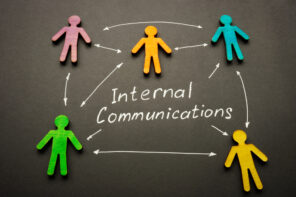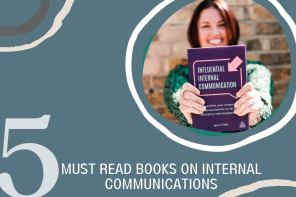
Monday January 25, 2021
How to reduce email stress
Email stress is the increase in stress level and an elevated heart rate that most people experience when dealing with work emails. A study by Professor Tom Jackson from Loughborough University showed that 92% of people become stressed when they receive and read emails in the workplace.
“Inbox zero”, a popular term coined by Marilin Mann, is a system to reach and maintain zero unread emails in your inbox. But Mann says in an article to The Wired that people have taken the concept a bit too far with constant organising and labelling. An inbox is not just your email inbox – it is anything that demands your attention and time, he says. So dealing with emails is an art and a science at the intersection of effective communication and time management whose aim should be to make you less stressed and more productive. Here is how to do so:
Writing effective emails
1. Medium
Emails are usually meant for asynchronous communication, i.e communication that does not require an immediate response. If what you are communicating would encourage lots of back and forth between you and the recipient, using synchronous communication tools such as a messaging app like Slack or a phone call might be more efficient.
If what you are conveying is long-winded or open-ended and does not need to be documented in writing, for example sharing your ideas about a project with a colleague, sending voice notes in messaging apps might be easier than emails for both you and the recipient. It is because listening to long audio is easier than reading long swathes of text.
2. Timing
As working from home and across time zones becomes more readily available to many of us, the best practice is to schedule your email to be sent at the work hours of the recipient. This ensures they do not receive your email when it is in the middle of the night at their location. It shows you are respectful and thoughtful of the other person who would have to deal with it.
Similarly, be respectful of your own work-life balance by turning off your email and Slack notifications after work hours. Research by organisational psychologist Stewart D. Friedman at the Wharton School shows that it is not the long hours – but digital distraction after work hours – of the parents that negatively impact the children. Imagine reading an email on Friday night about completing a task that you could have easily read on Monday morning after a refreshing weekend.
Even during work hours, scheduling just 2-3 stretches of time to check and respond to emails increases productivity according to research by Cal Newport. It is because the constant checking of emails does not give you the long stretch of uninterrupted time to focus on deep work – the kind of work important to have high-quality and creative outputs. Similarly, research from the University of British Columbia shows that checking emails less frequently also reduces stress.
Finally, when you do check your emails, know that effective communication is also an art of being aware of and managing your emotions. Emails don’t need to be responded to immediately – which means if you feel that you are sensing a negative tone from the sender or feel the urge to respond in a snarky or angry way for any reason, pause for a moment. Emotionally centre yourself first to respond professionally and respectfully to maintain the decorum of the workplace.
3. Content
A TED talk by Victoria Turk suggests that your email writing should be guided by the question of how to make the email as quick and easy as possible for the recipient to deal with. Keeping that in mind, here are some standard ways to ensure efficiency across the different components of an email:
-
The subject line
Author Kabir Sehgal in an article in Harvard Business Review suggests an interesting way military personnel use keywords in subject lines to characterise the nature of the email. For example, “decision” when something requires a decision by the recipient, “request” when asking for approval or request, “info” when providing information but that doesn’t require any action from the recipient, “coord” when coordination by or with the recipient is needed. This clarifies for the recipient what is needed from him before even opening the email. Maybe you can set up a similar keyword system within your team and see if it saves you and your team time and stress.
-
Salutation
Salutations differ from culture to culture. People in the UK usually use “Dear ” while in the US, “Hi ” is preferred.
-
Body
Put the main info on the first line, followed by the background information or context, instead of the other way round. Doing this ensures that what is the main point of your email is conveyed immediately. This helps the recipient read the rest of the email within the context of what he is supposed to do with it.
A clear email structure with points and subpoints when you have lots of things to discuss is also helpful. Giving them all the information they need, for example, the date and time of the deadline, is the best practice to ensure smooth conversation that reduces unnecessary email overload.
A common standard in email writing is to keep the email succinct. It should ideally be short enough that it can be read without a need to scroll down.
But being brief does not mean you can skip on emotional proofreading. “Writing ‘Let’s talk’ when you mean ‘These are good suggestions, let’s discuss how to work them into the draft’ will make the recipient unnecessarily anxious,” writes Liz Fosslien from Humu, a company about better work habits, in a LinkedIn post.
93% of the communication is non-verbal, expressed through tone, expressions and gestures. So the use of emojis and exclamation marks, albeit in a limit such as maximum one emoji per email, to fill that gap in the written word is a good way to express a friendly demeanour. For example, receiving “Thanks!” is way better than receiving “Thanks.”
-
Closing
Ending an email with “Thanks” or “Best” works in most settings.
3. CC
Finally, only add people to the CC field if absolutely necessary. You don’t want to overload the inbox of people who don’t need to be in the thread. Plus if they start to respond out of courtesy of being marked in the email, it would mean lots of unnecessary emails – and stress – for everyone.
Conclusion
While dealing with emails effectively is a practice that gets better with time, it is worth the effort as it has practical and mental health benefits for both you and the recipient.
Curzon PR is a London-based PR firm working with clients globally. If you have any questions, please feel free to contact our Business Development Team bd@curzonpr.com






Follow us